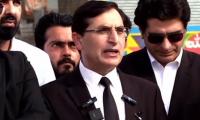Islamabad: Heating debate has begun in India about the causes of killing of two Indian pilots who were perished in the most modern French made Indian Air Force (IAF) multi-role Mirage-2000 plane on Friday.
The two died despite ejecting from the cockpit. According to Indian media discussion it is too early to tell why the pilots died after ejecting from an aborted Mirage 2000 in Bengaluru and were unable to do as safely as the ejection system should have ensured. But certain questions are raised because of this malfunction. If there was no massive wind factor the ejected pilots, Squadron Leader Siddhartha Negi and Squadron Leader Samir Abrol, should not have fallen back on the burning debris but safely away from it.
According to Tom Farrier, a USAF command pilot: "Virtually all present-generation ejection systems are "zero/zero," meaning they can get somebody out of an aircraft at zero altitude (on the ground) and zero airspeed (standing still) and push them high enough to allow the parachute to deploy. (If the winds are such that you come back down under canopy into merrily flaming wreckage, well, it just wasn’t your day.)”
The Indian Mirage 2000s are fitted with the Martin Baker Mk 10 ejection system which is highly reliable and has saved over 7,500 lives globally as of February 2018, when a Kenyan pilot pressed the button on a malfunctioning F5 fighter jet. The fact is that the ejection system which comprises several aspects has to work perfectly and experts say the slightest error or even a small non-working part can cause the system to fail in its activation. This becomes a point of concern because the Mirage in question had just been upgraded in an ongoing programme to improve the performance envelope of what is now a 30 year old aircraft.
Passing any opinion on the actual accident is futile without knowing the exact situation of the aircraft, its speed on the take-off path, the point at which the pilots ejected and why they were compelled to do; any surmises would only be guesswork. That brings us to the crucial point of the argument: Whether these relatively old jets have the capability for an upgrade and to what extent the refurbishing and upgrading of the plane had an impact on the efficiency of the ejection system and the overall capability of the jet.
It is also necessary to ask Hindustan Aeronautical Limited if this exercise to complete the upgrade in record time, with the kits obtained from Dassault, in France was an attempt by the public sector aircraft manufacturer to offset the scathing criticism by Air Chief Marshal Dhanoa that the aviation company was miles behind in its schedules for assembling not just the Mirage 2000 but also the Jaguars.
Just two months ago, Dhanoa had said, "In the Sukhoi delivery HAL is three years behind, in the Jaguar we are six years behind, even the Mirage is two years behind." Keeping that in mind are these upgrades being done rapidly to give the impression of high competence and capability in the face of the criticism?
It is a valid contention and till an independent investigation confirms exactly what went down in Bengaluru be it upgrade or maintenance there should be a total scrutiny of the other 48 aircrafts being fitted with similar upgrades.
A thorough check of the ejection systems is also compulsory before we entrust another test flier to board a freshly upgraded aircraft. Continuing with the upgrades without ascertaining what exactly went wrong would be unfair to those who fly them. Losing pilots is a grievous loss and we need to be sure we are doing everything to minimise that risk.
The Eid milan party was organised by the students of Aiwan-e-Quran of AIMS Education System, here. The students and...
Jacaranda Family Club, DHA-2 Islamabad. — x/islaamabadIslamabad: Innovista Rawal, a dynamic co-working space,...
The 22nd convocation of Islamabad Model College for Girls Postgraduate, G10/4 was held at the college auditorium on...
Dean of Indus University, Dr Aftab Madni. — Indus University websiteIslamabad: Dean of Indus University, Dr Aftab...
Poets from Pakistan, Canada and the US reading out their poems in Mushaira held at the launch of the PST Canada...
Relatives sit next to patients suffering from dengue fever resting under a mosquito net at a hospital in Pakistan. —...







